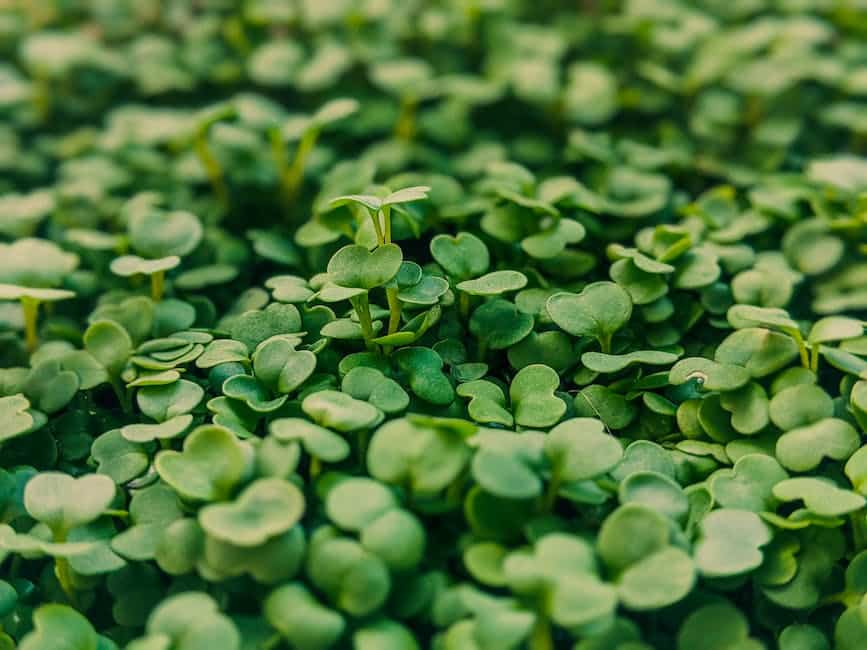How Long Do Microgreens Take to Grow?
Microgreens have gained popularity in recent years due to their nutritional value and ease of cultivation. These tiny, nutrient-dense greens are typically harvested when they are young and tender, making them a perfect addition to salads, sandwiches, and other dishes. One of the most common questions among aspiring microgreen growers is how long it takes for these greens to reach maturity. In this article, we will explore the average growing time for microgreens and provide some insights into the factors that can influence their growth.
Average Growing Time for Microgreens
When it comes to the growing time for microgreens, there is some variation depending on the specific variety. However, based on the information provided in the sources, we can conclude that most microgreens can germinate within 2 to 3 days and are ready to harvest between 7 to 21 days.
Factors Influencing Microgreen Growth
Several factors can affect the growth rate of microgreens:
1. Variety
Different microgreen varieties have varying growth rates. While some may sprout and mature within a week, others may take a bit longer. It’s important to research the specific variety you are growing to ensure you have an accurate understanding of its growth timeline.
2. Growing Conditions
The growing conditions significantly impact the growth rate of microgreens. Let’s take a closer look at the optimal conditions for microgreen growth:
Adequate Light
Microgreens require sufficient light to carry out photosynthesis and develop properly. Most varieties need at least 4-6 hours of direct sunlight or supplemental artificial lighting per day. Providing the right amount of light will contribute to faster and healthier growth.
Proper Temperature
The ideal temperature range for microgreen growth is typically between 55-70°F (18-24°C). Extreme heat or cold can slow down the growth process or even damage the plants. Maintaining a consistent and moderate temperature is crucial for optimal growth.
Humidity
Microgreens thrive in a humid environment, especially during the germination stage. The recommended humidity level ranges from 40-60%. Higher humidity promotes successful germination, while slightly lower humidity levels encourage faster growth after germination.
Air Circulation
Adequate air circulation is essential for microgreens. It helps provide oxygen and nutrients to the plants, prevents the development of mold and mildew, and strengthens their overall structure. Ensure that there is proper ventilation in your growing area to create a favorable environment for your microgreens.
Suitable Growing Medium
Microgreens can be grown in soil or hydroponic systems. If using soil, it should be nutrient-rich, well-draining, and free from pathogens. Hydroponic systems offer precise control over nutrient delivery, ensuring optimal growth conditions for microgreens.
Conclusion
While the average growing time for microgreens is around 7 to 21 days, it’s important to note that specific varieties may have different growth rates. Understanding the optimal growing conditions, including light, temperature, humidity, air circulation, and suitable growing medium, is crucial for successful microgreen cultivation. By providing the right conditions, you can ensure that your microgreens grow efficiently and reach their full potential.
Related Websites:
- Microgreens Corner – How Long Do Microgreens Take to Grow?
- Bootstrap Farmer – The Ultimate Microgreen Cheat Sheet
- Microveggy – Growth & Germination Time
- Gardening Channel – How to Grow Microgreens 101
- Master Microgreens – Microgreens Temperature
- Master Microgreens – Growing Conditions for Microgreens
FAQs:
Q: How long do microgreens take to grow?
The average growth time for most microgreen varieties is between 7 to 14 days. However, specific examples such as broccoli microgreens may take around 5 to 6 days, while sunflower microgreens can take up to 10 to 12 days.
Q: What are the benefits of microgreens?
Microgreens are highly nutritious and packed with flavor. They are rich in vitamins, minerals, and antioxidants, making them a great addition to a healthy diet. Additionally, microgreens can add vibrant colors and unique textures to dishes, enhancing their visual appeal.
Q: What factors affect the growth time of microgreens?
Several factors can influence the growth time of microgreens. Environmental factors such as temperature, light, and humidity play a crucial role. The choice of plant variety and seed quality, as well as proper watering and soil conditions, also impact the growth time.
Q: How can I optimize the growth of microgreens?
To optimize microgreen growth, it is recommended to provide adequate light, maintain the right temperature and humidity levels, and ensure proper watering and soil conditions. You can accelerate or slow down growth by adjusting these factors accordingly. Additionally, it is important to care for and maintain your microgreens throughout the growth process and avoid common mistakes like overwatering or using poor-quality seeds.






